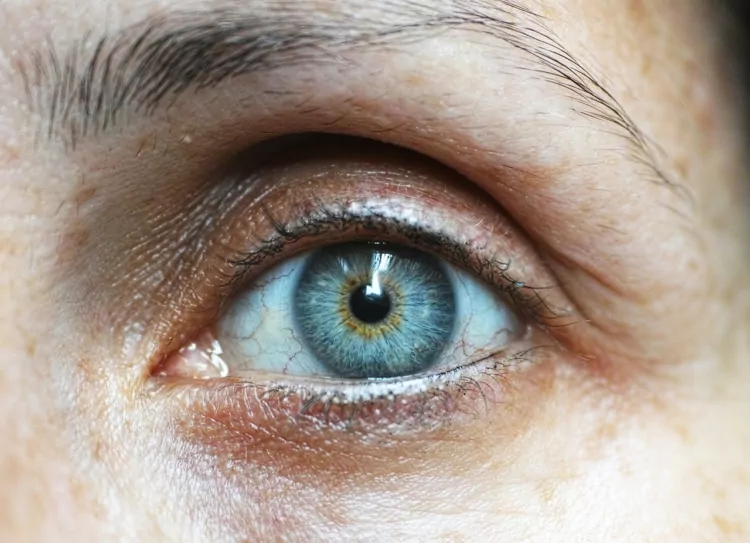This post will provide information on how to remove a cataract, the cataract surgery procedure, and frequently asked questions surrounding all things cataract.
Cataract surgery is one of the most common and successful medical procedures performed worldwide. It is renowned for its simplicity and remarkable success rate in restoring vision and improving the quality of life for millions of people. There are many reasons why you should not be concerned about having cataract treatment:
- Prevalence and popularity. In the UK, cataract surgery is among the most frequently performed surgical procedures. According to the NHS, approximately 400,000 cataract surgeries are performed annually in the UK, making it one of the most commonly performed routine surgical interventions.
- Straightforward surgery. Cataract surgery is often referred to as one of the most straightforward surgeries in the field of ophthalmology.
- High success rates. At Optegra, we typically perform over 35,000 procedures every year at one of our dedicated eye hospitals and clinics, with a success rate of 99.6%.
Comfortable procedure with minimal recovery times. Advancements in treatment mean that most people feel the slightest discomfort during the procedure and typically enjoy quick recovery times.
How are Cataracts Removed?
Cataracts are removed using the phacoemulsification procedure. This is a simple and swift day-case procedure whereby the surgeon makes a tiny incision to access the cloudy lens in the eye, which is replaced by a plastic one.
Tailoring to patient needs. The cataract procedure is usually performed under local anaesthesia; however, general anaesthesia may be considered depending on the patient’s specific needs, the progression of their cataracts, and their overall health.
Mild to moderate cataracts. Cataract surgery can be performed even when a cataract is mild to moderate if the cataract is affecting the patient’s quality of life and the patient is unable to manage their vision with prescription glasses or contact lenses. If cataracts are progressing and interfere with activities of daily living, such as reading and driving, surgical removal becomes a viable option.
Advanced cataracts. In cases of advanced cataracts, where vision impairment is severe and significantly affects the patient’s quality of life, cataract surgery is recommended.
Associated eye conditions. Patients with other eye conditions, such as glaucoma, corneal or retinal issues, may require a more customised approach to cataract removal. The surgeon will consider these factors when determining the most appropriate technique.
There are a variety of lenses used for cataract surgery. When undergoing cataract surgery, the patient will also need to decide what type of lens to use. Your consultant will explain which lens might be most suitable for you based on many factors, including your lifestyle. Patients will then be able to choose between the different types of lenses, which include monofocal and multifocal lenses.

Phacoemulsification Cataract Surgery
The surgical process for cataract surgery is called phacoemulsification (often referred to as phaco) and is the most common and advanced technique for cataract removal. It involves the use of ultrasound technology to break up the cloudy lens into small fragments, which are then suctioned out through a small incision. Phacoemulsification is a minimally invasive procedure that usually requires a smaller incision and leads to faster recovery times than older cataract removal techniques.
Extracapsular Cataract Extraction (ECCE)
In ECCE, a larger incision is made on the eye’s surface, and the cataract is removed in one piece without being broken up. This technique is less commonly used today but may be necessary in cases of very advanced cataracts or other complications.
Intracapsular Cataract Extraction (ICCE)
This technique is rarely used today and involves removing both the cataract and the surrounding lens capsule in one piece. ICCE has been largely replaced by other, more modern methods.

How Long Does Cataract Surgery Take?
Cataract surgery is a relatively quick procedure that typically takes around 8 to 20 minutes to complete. There is no need to stay overnight, and your sight will begin to return a few hours after the procedure.
Medications are typically prescribed both pre- and post-op as follows:
Preoperative medications. Before cataract surgery, your eye surgeon may prescribe eye drops or medications to be used in the days or weeks leading up to the surgery. These medications are used to dilate the pupil and reduce inflammation or infection risk.
Medications on the day of surgery. You may opt for a mild sedative to help you relax, but you will typically remain awake during the procedure. Local anaesthesia will be administered to numb the eye and keep it comfortable.
Postoperative medications. After cataract surgery, you will typically be prescribed a regimen of eye drops to prevent infection, reduce inflammation, and promote healing. These eye drops usually include antibiotics, corticosteroids, and non-steroidal anti-inflammatory drugs (NSAIDs). You will need to use these drops as directed by your surgeon.
What Does a Cataract Look Like When Removed?
When a cataract is surgically removed from the eye, it appears as a cloudy, opaque mass that varies in size and density depending on the stage and type of cataract. The appearance of a removed cataract can best be described as follows:
Milky or cloudy. Cataracts are characterised by the clouding of the eye’s natural lens. This cloudiness can range from mild to severe. In the early stages, it may appear as a subtle haze, while in advanced stages, it can be much denser and almost completely opaque.
Yellowish or brownish tint. Some cataracts, particularly nuclear cataracts, can have a yellowish or brownish tint. This discoloration is due to changes in the proteins and pigments within the lens.
Opaque and solid. The cataract, when removed, is a solid and opaque structure. It is not a liquid or gel-like substance. It consists of clumps or aggregations of proteins and other lens materials that have become disorganised and cloudy over time.
Varied size and shape. The size and shape of the removed cataract can vary from patient to patient and depend on factors such as the cataract’s type, severity, and how it is removed. In modern cataract surgery, the cataract is broken up into smaller pieces using ultrasound (phacoemulsification) before removal, making it easier to extract through a small incision.
Texture. To the naked eye, the removed cataract may appear somewhat solid and may have a somewhat irregular texture, especially in cases where it is not entirely homogeneous.
It’s worth noting that cataracts are typically removed in small, fragmented pieces during cataract surgery to minimise the size of the incision and facilitate the removal process. After removal, the eye surgeon ensures that the natural lens has been completely cleared from the eye before implanting an artificial intraocular lens (IOL).
Can You Have Both Cataracts Removed at the Same Time?
You can choose to have cataract surgery on the same day or a few weeks in between.
Patients may opt to have both eyes done on the same day so that they have fewer hospital visits and a quicker recovery; this may also help reduce anxiety. On the other hand, patients may feel anxious about having both eyes done together and choose to have one eye done, wait, and then have the second eye surgery. It is important to remember that surgery at Optegra is extremely safe and successful, with 99.6% being successful and without any complications.
Will You Need to Wear Glasses After Your Cataract Removal?
After cataract removal surgery, many people experience a significant improvement in their vision, and some may find that they no longer need glasses for certain activities or situations. However, the need for glasses after cataract surgery can vary depending on several factors, including the type of intraocular lens (IOL) used, the individual’s visual needs, and the presence of any other eye conditions. Consider the following:
Vision improvement. Cataract surgery is primarily performed to restore clear vision. The cloudy natural lens (cataract) is replaced with an artificial IOL, which should provide excellent visual acuity. Many people experience a significant reduction in nearsightedness or farsightedness after cataract surgery. With advanced cataract surgery (link to post), you can get rid of your cataract and your glasses.
Type of IOL.
Monofocal. These IOLs are set to focus at a specific distance, either near or far. Most commonly, monofocal IOLs are set for distance vision. While this can provide good distance vision, reading glasses may still be necessary for close-up tasks.
Multifocal. These IOLs are designed to provide a range of focus, reducing the need for glasses for both near and distance vision. However, they may not eliminate the need for glasses entirely, especially for certain activities such as driving.
Astigmatism correction. Some individuals have astigmatism, a common refractive error caused by the irregular shape of the cornea or lens. Toric IOLs or laser procedures can correct astigmatism during cataract surgery, potentially reducing the need for glasses for distance vision.
Individual visual needs. The need for glasses after cataract surgery depends on an individual’s specific visual requirements. For activities like driving, distance vision is crucial. If the IOL is set for distance vision or astigmatism correction, individuals may find that they have good distance vision and can drive without glasses. However, they may still need glasses for reading or intermediate tasks.
Timing of prescription changes. It is essential to wait until the eyes have fully healed before getting a new eyeglass prescription. This typically means waiting several weeks to a few months after cataract surgery. The eye needs time to stabilise and adapt to the implanted IOL. During this healing period, your ophthalmologist will monitor your progress and determine the most appropriate prescription for your glasses.
What next? Get in touch for free, no-obligation advice.
The process of cataract surgery has been advanced and refined over several decades. It is now among the most commonly performed elective procedures in the world. With Optegra, you’re in safe hands. Our nationwide dedicated eye hospitals are the epitome of comfort, and you’ll be treated by one of our expert cataract eye surgeons. If you’re suffering from cataracts, why not contact us to see if we can help?

By Author: Alex J Shortt
Mr Shortt is a leading ophthalmic surgeon and an expert in the fields of cornea, cataract and refractive surgery.
Medically Reviewed Date: 19th September 2023
